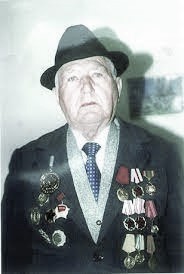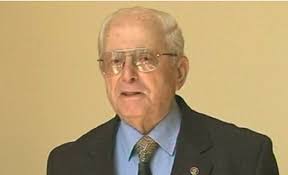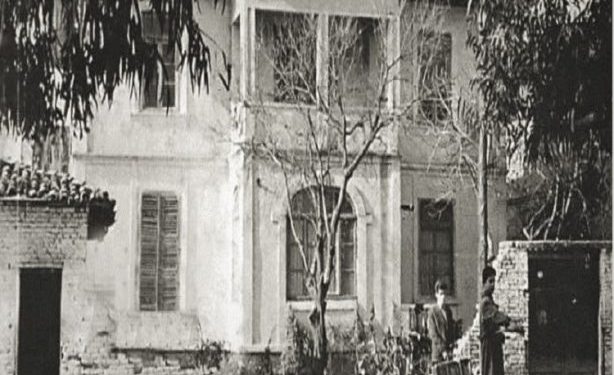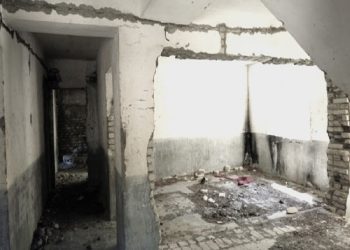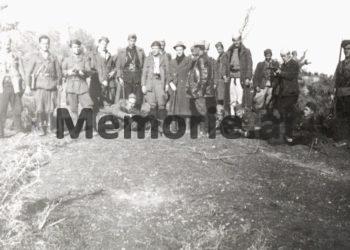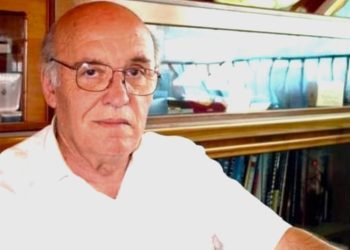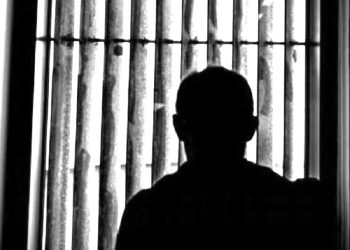From Agim Musta
The tenth part
Memorie.al / On the fourth anniversary of the passing away of the well-known historian, researcher, writer and publicist Agim Musta, (July 24, 2019), former political prisoner, his daughters Elizabeta and Suela, gave him the right to exclusivity for the publication, by the online media Memorie.al, of one of the author’s most prominent publications, such as the ‘Black Book of Albanian Communism’. This work contains numerous data, evidence, facts, statistics and arguments unknown to the general public, on communist crimes and terror in Albania, especially against intellectuals, in the period 1945-1991. The publication for the first time of parts of this book is also the realization of one of the bequests of the historian Agim Musta, who, from the beginning of 1991 until he passed away, for nearly three decades was engaged with all his powers, working to raise collective memory, through book publications and publications in the daily press. All that voluminous work of Mr. Agim Musta, concretized in several books, is a contribution of great value to the disclosure of the crimes of the communist regime of Enver Hoxha and his successor, Ramiz Alia. A good part of the publications of Mr. Agim Musta, is also translated into English. Thanking the two daughters of the late Musta, who chose Memorie.al, to commemorate their father, from today we are starting the publication, part by part, of the “Black Book of Albanian Communism”.
Continues from last issue
-Political trials of the Albanian communist regime-
(1945-1991)
A. The stunts of Orhan Frashëri…!
The head of the Security of Berat, Orhan bey Frashër, was brought to the “tip of the nose” by some crooked merchants of the city of Berat and Lushnje that they were not taking out the money hidden in the pipes inserted in the walls and buried in the gardens. On their backs, you had used all kinds of torture, derived from medieval barbarism. Even the advice of the Yugoslav “Druze”, (comrades) about the special treatment of those “Surubets”, did not drink water. He had a bad night’s sleep and still had not found the trick, how to get the money from those gobseks, who had spared nothing to bring the communists to power.
And what hadn’t the “red bey” done to those “maskers who had sucked the blood of the people”?! You had removed their nails with tweezers, smeared their heads with feces, put them naked in barrels of cold water in the middle of the frost, and kept them hanging by their arms from the beams, etc., but never they showed. They only prayed and swore while crying that they had surrendered everything, that there was nothing left for them and they asked for mercy, and that Captain Orhani would put his hand on his heart and leave them free to go to their bewildered families.
On a cold February night in 1946, Captain Orhani ordered them to be taken out of the dungeons and placed on the terrace of the “Tomorri Hotel”, which the communist government had turned into a prison and place of torture. They lined them up with their shoulders against the wall, wearing only panties and bras, handcuffs and handcuffs. The gust of wind that blew that night from the Tomorri Mountain made those unfortunates tremble like perches, from whom the communist government wanted to snatch even the last ALL, earned for years, with sacrifices.
Orhan Bey, dressed like the pashalars of Turkey, went out on the terrace, followed by a group of security guards. In his hand he held a revolver with a mill, manufactured at the end of the 20th century in the Austro-Hungarian Empire. The revolver’s muzzle, in the pale moonlight, looked like a small mullet, and its cartridges were as thick as those of couples. Hell, where did Orhan Bey find that damn revolver? “Bring the first one!” shouted Captain Orhani like a raging wolf. Two non-commissioned officers of the DMP (People’s Protection Division) brought a blindfolded man before him.
“This is a man of yours, who will not hand over the money in the best way. We got out of debt with words and wood, but he is stubborn like a mule, just like you. I have decided to change tactics. You have tired me enough. I’ll give you all one by one, a bullet in the head and put them in the donkey dump.” He raised the cobra up and rested its barrel on the forehead of the unfortunate blindfolded and handcuffed. He pulled the trigger of the revolver and the terrace of the “Tomorrit” hotel rumbled, as if cannon had been fired, not a cannon. The victim fell to the ground like a log. Bloody skulls and brains splattered the traders lined up against the terrace wall. Some fainted, others filled their panties. “Hey, what do you say? – Orhan Bey spoke boldly, – would you rather hand over the money, or should the line continue?!”
“Aman, Captain Orhani, don’t kill us, because we will hand over not only our money, but also what our fathers and grandfathers have saved! Aman, don’t kill us, because we will give even the last penny! And they trembled and cried like children “Enough drooling! From now on, accompanied, you will go to your homes and bring here what you have hidden in the walls and courtyards!” He ordered to remove their handcuffs and send them to their homes. Within 24 hours, the merchants of Berat and of Lushnja “voluntarily” handed over the money, gold and jewels. They never learned that the man whose skull Captain Orhani blew up was an ordinary criminal, sentenced to death a few weeks ago.
For this “original trick” invented by Comrade Orhan, he was rewarded by the terrible Party with money and an extra star on his Soviet epaulettes.
EPILOGUE
Since 1968, in the Albanian National Bank, in the Treasury branch, a special office was created, where gold was deposited in the form of ingots, which came from the Copper Smelting Plant in Rubik. The head of this office was the sister-in-law of Ramiz Ali, the former head of the secret police of the dictator Hoxha.
Both the extraction of gold in Rubik and its deposit in the National Bank were done with strict security measures and were kept very secret. This operation was led by Ramiz Alia himself and the Dictator and his wife Nexhmije Hoxha (Xhuglini) was aware of it. The Albanian communist state, after robbing Albanians of gold and jewels, began to steal itself for the benefit of Enver Hoxha’s close caste. According to some specialists, who have worked at the Rubik Copper Plant, that pluralism has opened their mouths, Rubik produced 130 kg every year gold In fact, the former Minister of Finance, Andrea Nako, also affirmed it in a secret announcement he made to the former Prime Minister Adil Çarçan, on October 8, 1987. From 1968 to 1990, the Factory produced 2,860 kg of gold, while 1,777 kg of gold ingots are deposited in the state treasury.
The question naturally arises: Where did 1,083 kg go? Gold that is the difference between production and deposit in the treasury?! Why has Ramiz Alia and the dictator’s widow remained silent about this accusation?! Why haven’t the transitional Albanian governments pursued this issue to compensate with this gold, the former political prisoners, who have built the Copper Smelting Plant in Rubik with blood and suffering?!
Violence and blood, for the collectivization of Myzeqe
Autumn of 1946
All Myzeqeja gathered in Gorre. The dictator came dressed in the uniform of a colonel-general and was healthy. He sneered at the diabolical game he had prepared for the dried-up and weak Musketeers, with protruding backs, yellow, wrinkled faces and patches on their heads. The Lals, with the eyes of the heifers, expressed more surprise and doubt about those letters stamped with hammer and sickle and with the Bolshevik star, which made them “lords of the earth”. “Game, watch lasso, game and nothing else!” – said a mushy old man, whose life had made him doubt everything. “The pear has its tail back,” added another.
“These, three years ago, killed 72 of our brothers in Golem and would have shot another 300, if you had not stopped the murderous hand of Mehmet Shehu, Rrahman Ruçi. The land is forgiven by a laddie, which has not had panties in the ass”. How many murders did the communists do in Myzeqe, “oppressed by the Beylers”?! After a few months, as the carpets were divided, the land was taken back to the Myzeqes. According to the Bolshevik model, in the heart of Myzeqe, in Krutje, in 1946, the first Agricultural Cooperative was established.
“Joined” not only the lands that the “Commander” gave them, but also oxen, goats, kids, and even chickens. This had not occurred to anyone. Instead of a bey, who came once a year to the village of Myzeqar, hundreds of small beylers were created, who hung over the village like a hammer and sucked its blood like Tërbufi’s nymphs. Presidents, party secretaries, heads of sectors, brigadiers, coachmen, cooks grew fat with the work of the poor musketeer, whose hoe and shovel were not separated from his hand, from sunrise to sunset.
Collectivization was strongly opposed in many villages of Myzeqe:
“You can take our life, but not the earth!” said the villagers of Stankarbunara. “We will shoot rifles, if you force us to hand over the land”! – The villagers of Gurzi shouted loudly. In Bubullimë, the villagers kept them for 7 days and 7 nights, sitting in a meadow, to get them to talk about collectivization. No one, in all of Albania, objected to the taking of lands as much as Myzeqeja. The Communist Party sent its emissary Mihal Bisha to Lushnja. The beast had the last name and acted like a beast.
Hundreds of people are arrested, among them the former commander of the 16th Partisan Brigade, Rrahman Ruçi. Xhavit Kurti, the chairman of the National Liberation Council of Gurzi, is killed. Who Killed Him? Some said that Petro Daja and Asllan Guberja had killed him. Others whispered that the Security forces had killed him to justify the communist terror, so carefully prepared by Mihal Bisha. In Stankarbunare, the secretary of the party and the chairman of the Council are killed. In revenge, the state kills Petro Daya’s brother and father. In the middle of Lushnja, they hanged the exemplary teacher, Fuat Kurti, together with four villagers from Gurzi. Muzeqe was collectivized with terror and blood. The poet of Socialist Realism, Aleks Çaçi, published the poem “Ashtu Myzeqe”.
“We are working together, 20 feathers that / so Myzeqe…”!
Petro Daja continued to wander armed through Myzeqe. He escapes ambushes, avoids traps and becomes a terror for the communist cadres. It does not last long and he falls, fighting, in October 1951, near Lushnja. The last symbol of musketeer resistance was extinguished. The news was trumpeted with joy throughout Myzeqene. His corpse is placed on a barrel and tied with a steel cable to the branches of a mulberry tree. Thousands of musketeers are brought to Lushnja by force, to see the corpse of Petro Daya. They leave it like that, for days, until it decomposes and the smell of the corpse suffocates Lushnja. This is the story of the “gifted” land of the muskrat-raped land.
The incident of February 19, 1951, at the Embassy of the Soviet Union in Tirana
On February 19, 1951, at 6:00 p.m., an explosive device was thrown at the entrance of the embassy of the Soviet Union in Tirana (now the Ministry of Education). Who threw that “bomb”, which did not kill or injure anyone? Who were the executors and organizers of that “assassination”? The versions are different, but the most reliable one is that the “incident” that resembles two drops of water with the murder of Kirov, on December 1, 1934, (former secretary of the Bolshevik Party of Leningrad, today Petersburg), was organized by dictator Hoxha. The embassy incident was used to unleash a mass terror against intellectuals and patriots in the capital, who were viewed with crooked eyes by the communist government.
Those days, a Soviet cultural delegation had arrived in Tirana to take part in the demonstrations that would be organized on the occasion of the 33rd anniversary of the creation of the Red Army. Precisely, on February 19, 1951, the day the “bomb” was thrown, the Russian embassy would host the delegation from Moscow. Neither did the Minister of the Interior at that time, Mehmet Shehu, who reported to the meeting of the Bureau Politike of February 20 about this incident and no other member of the Politburo, did not mention by name the assassins and organizers of that incident. In fact, Enver Hoxha proposed to the Politburo that the dropping of the “bomb” at the Soviet embassy should not be talked about. , in the telegram that was going to be sent to Stalin. Why did this happen? Could it be that the explosives were thrown by anti-communist elements, not manipulated by the State Security?
In the speeches of Mehmet Shehu and Enver Hoxha, published in the newspaper “Voice of the People” on March 2 and 3, 1951, terror is justified and the incident at the Soviet embassy is not mentioned at all. According to the testimonies of former political prisoners of that time and former senior officers of the Security, who were later convicted by the dictatorship, the names that are being used for throwing explosives are: Hysen Llulla and Qazim Laçaj.
Hysen Llulla was a 20-year-old Cretan boy, brave and staunchly anti-communist, member of the Resistance Group. It is known that this group later fell into the hands of State Security and was manipulated by it. It is not at all surprising that Hysen Llulla acted in the throwing of explosives in a completely individual way. After a few days, he was killed on “Shëngjergji” Street (today “Ali Demi” street), in an attempt with the Security agents.
The second person rumored to have carried out the “assassination” was traffic police officer Qazim Laçaj. On the evening of February 19, he was assigned to duty near the embassy. It is said that Qazim threw the bomb driven by anarchist motives, to see the confusion that throwing the bomb would cause in his department. On February 20, Qazim Laçaj is arrested for lack of vigilance in the performance of his duty, but when he learned in the cell that he had become the cause of a mass terror, he voluntarily took over the throwing of the bomb. He was sentenced to death and was executed within a day. It is not known for sure if Qazim Laçaj sacrificed himself for the sake of “Mother Party”, or if he followed the orders of his Kobzi department, or if it was an individual action of his. The enigma of that assassination took with them to the grave, those who prepared it and the one who carried it out.
There are irrefutable facts about the preparation of the murder of 22 victims on February 27, 1951. We are mentioning only two of them: 1. The opening before the assassination, of the pit where the corpses would be buried! 2. Drafting of lists at the beginning of February, by the Ministry of Internal Affairs, for those who would be arrested, sentenced and shot. The lists were signed by Rasim Dedja and Edip Çuçi. Eyewitnesses from the villages of Mënik and Vaqar in Tirana, among them Kadri and Selam Hysa, stated that; on February 18 and 19, 1951, a police platoon opened a hole near the Beshiri Bridge, with dimensions of 8 x 8 x 1.5 m. The place was guarded by police until midnight on February 26, when the 22 victims of the so-called “assassination” plot to throw the “bomb” at the Soviet Embassy were shot.
The villagers had heard that night, the drums of rifles and machine guns, as well as the screams of a woman, from the place where the pit had been dug, a few days before. Those villagers, after 1990, helped the families of the victims to find the place where their relatives were shot, four decades ago. On the other hand, the former general of the State Security, Halim Xhelo, mysteriously annihilated in the prison hospital of Tirana, in 1974, has declared to his fellow sufferers that the lists for the arrest of persons for the incident of February 19, at the Soviet Embassy, were drawn up at the beginning of February in the Ministry of Internal Affairs and were approved by the dictator Hoxha. There is no doubt that the February massacre of 1951 also had the hand of the Soviet advisers, close to the Albanian Security.
Decree 1223 of the Presidium of the People’s Assembly of the Republic of Albania, was signed by the chairman, (political adventurer), Omer Nishani, Comintern agent and member of the Fascist Supreme Council (1939-1942). After a few years, Omer Nishani was thrown into the trash bin by the dictator Hoxha and was forced to end his life with a bullet to the head.
Decree 1223, hastily approved on the night of February 26, had only 6 articles and provided that within 10 days, for terrorist acts, the arrest, investigation, trial and execution of the decision, without the right of appeal. The decree was a verbatim copy of the Stalinist decree of December 10, 1934, following the assassination of Kirov on December 1 of that year. With that decree, the great terror began in the Soviet Union, that within four years (1934-1938), according to the French historian Robert Conquest, 6 million people were arrested; 3 million of them were executed and died in labor camps, 2 million people.
The head of the Soviet G.P.U., short-haired Yezhov, says that within 3 days, after Kirov’s murder, 15,098 people were arrested, half of whom, after December 10, were executed. But let’s go back to the evening of February 19, 1951, when after the explosives were thrown, the streets of Tirana were buzzing with Security cars. Here is what one of the detainees of the black night, named Ali Karaj, says; “I worked as a construction technician at the company ‘Muhamed Gjollesha’. At 11 o’clock at night, the gate of my house was kicked by the policemen, led by the operative of the Security, Aristotel Tasho. They jumped on me like mad, they kicked and punched me. They tied my hands behind my back with rusty wire and beat me to death in “Gaz”, where there was also another detainee, with a sack over his head.
After a few minutes, I found myself in the courtyard of the dungeons of Koç, behind the “Old Prison” of Tirana. There was the blacksmith. The high-pitched screams of the Security officers could be heard, cursing their victims with the foulest words. The blows with wood and fists of the arrested, their convulsive movements and faces covered with blood, showed the date. They divided us into groups of 20 people and killed us in the cells. In the dungeon we stood leaning on each other. In cell no. 26, where I was, I noticed the intellectuals; Niko Lezo, Myftar Jegeni and Tefik Shehu.
All three were shot after a few days. All that night and all the next day, the “Gaz” did not stop howling, bringing more arrestees to the Old Prison. The Security Officers, Besim Selita and Mit’hat Lame, caught people like hawks that catch chickens and they took them to the torture chambers. There they were awaited by the executioners: Halim Xhelo, Manol Milo, Stavri Xhara, Xhavit Struga and others, led by the chief executioner, Nevzat Haznedari. The arrested had to accept things that not only they had done it, but they had never even thought about it. Five days later, in the middle of the night on February 27, 1951, twenty-two men, including one woman, were barbarically shot.
They were: Tefik Shehu, Hekuran Troka, Lluka Drashkovic, Haki Kodra, Pandeli Nova, Thoma Katundi, Fadil Dizdari, Ali Qoraliu, Jonuz Kaceli, Gafur Jegeni, Petro Ekonomi, Zyhdi Herri, Niko Lezo, Myftar Jegeni, Qemal Kasaruho, Manush Peshpia , Andon Delhysa, Reiz Selfo, Pjerin Guraziu, Gjon Temali, Mehmet Shkupi, Sabiha Kasimati. All prominent intellectuals and most of them had graduated from the most famous universities in Europe. Over 80 people were sentenced to heavy prison terms. On March 3, the prisoners who were about to be released were taken out to the prison yard.
There came Mehmet Shehu, Minister of Internal Affairs and Josif Pashko, Deputy Minister, along with a bunch of senior Security officers. Mehmet Shehu proudly announced that; twenty-two arrested were shot, 80 were sentenced to imprisonment and those who were to be released were threatened to be quiet like chickens, because if they played their tails, their heads would be cut off.
On March 1 and 2, the families of those shot were deported, allowing them to take only one suitcase with them. Their houses and possessions were robbed by the “popular power”. – This was the epilogue of the great drama of February 1951.
On March 3, 1951, the newspaper “Zeri i Populli” published the speech of the dictator Hoxha, held at the National Conference of Innovators, where, among other things, it is said: “Let us intensify the class struggle to the top. Let us be merciless against the benefits of capitalism! The party will take their souls and exterminate them mercilessly. Let’s strengthen our boundless love for the genius Stalin, our holy father and savior”! Memorie.al
The next issue follows




